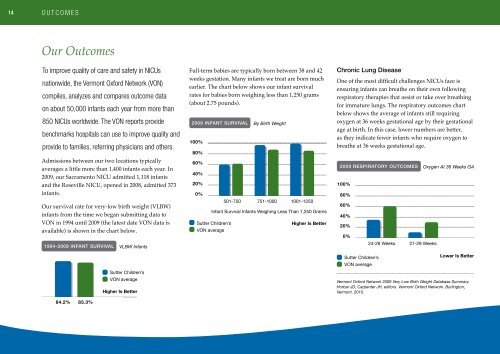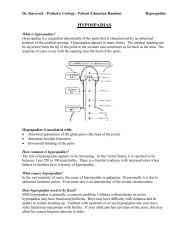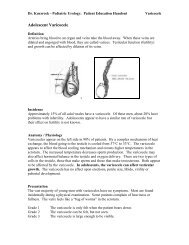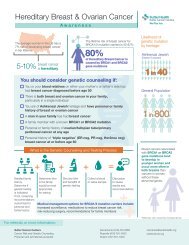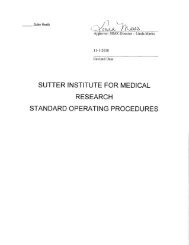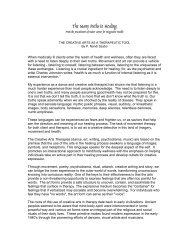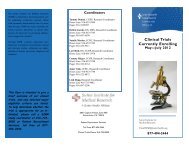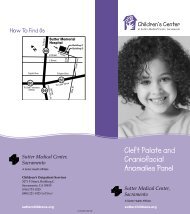Neonatal Intensive Care Program - Sutter Health Sacramento Sierra ...
Neonatal Intensive Care Program - Sutter Health Sacramento Sierra ...
Neonatal Intensive Care Program - Sutter Health Sacramento Sierra ...
Create successful ePaper yourself
Turn your PDF publications into a flip-book with our unique Google optimized e-Paper software.
14<br />
Outcomes<br />
Our Outcomes<br />
To improve quality of care and safety in NICUs<br />
nationwide, the Vermont Oxford Network (VON)<br />
compiles, analyzes and compares outcome data<br />
on about 50,000 infants each year from more than<br />
850 NICUs worldwide. The VON reports provide<br />
benchmarks hospitals can use to improve quality and<br />
provide to families, referring physicians and others.<br />
Admissions between our two locations typically<br />
averages a little more than 1,400 infants each year. In<br />
2009, our <strong>Sacramento</strong> NICU admitted 1,118 infants<br />
and the Roseville NICU, opened in 2008, admitted 373<br />
infants.<br />
Our survival rate for very-low birth weight (VLBW)<br />
infants from the time we began submitting data to<br />
VON in 1994 until 2009 (the latest date VON data is<br />
available) is shown in the chart below.<br />
1994-2009 Infant Survival<br />
VLBW Infants<br />
<strong>Sutter</strong> Children’s<br />
VON average<br />
Higher Is Better<br />
Full-term babies are typically born between 38 and 42<br />
weeks gestation. Many infants we treat are born much<br />
earlier. The chart below shows our infant survival<br />
rates for babies born weighing less than 1,250 grams<br />
(about 2.75 pounds).<br />
2009 Infant Survival<br />
100%<br />
80%<br />
60%<br />
40%<br />
20%<br />
0%<br />
Infant Survival Infants Weighing Less Than 1,250 Grams<br />
<strong>Sutter</strong> Children’s<br />
VON average<br />
By Birth Weight<br />
501-750 751-1000 1001-1250<br />
Higher Is Better<br />
Chronic Lung Disease<br />
One of the most difficult challenges NICUs face is<br />
ensuring infants can breathe on their own following<br />
respiratory therapies that assist or take over breathing<br />
for immature lungs. The respiratory outcomes chart<br />
below shows the average of infants still requiring<br />
oxygen at 36 weeks gestational age by their gestational<br />
age at birth. In this case, lower numbers are better,<br />
as they indicate fewer infants who require oxygen to<br />
breathe at 36 weeks gestational age.<br />
2009 Respiratory outcomes<br />
100%<br />
80%<br />
60%<br />
40%<br />
20%<br />
0%<br />
<strong>Sutter</strong> Children’s<br />
VON average<br />
24-26 Weeks 27-29 Weeks<br />
Oxygen At 36 Weeks GA<br />
Lower Is Better<br />
Vermont Oxford Network 2009 Very Low Birth Weight Database Summary.<br />
Horbar JD, Carpenter JH, editors. Vermont Oxford Network. Burlington,<br />
Vermont. 2010.<br />
84.2%<br />
83.3%


